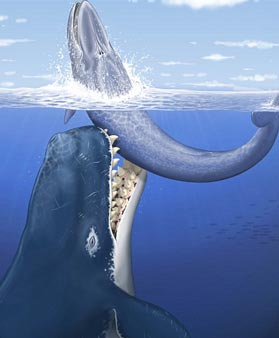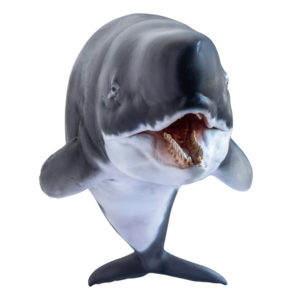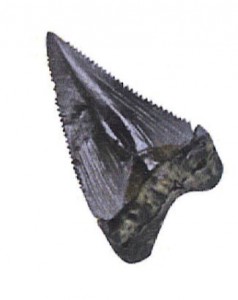Nightmare Whale from Prehistory
New Species of Cetacean Reveals Fearsome Ancestry of Sperm Whales
A new genus of giant prehistoric whale has been named and described – Leviathan melvillei.
A mystery that has puzzled scientists for many years may have finally been solved. In parts of the arid desert region of southern Peru, a number of strange teeth, obviously a meat-eater’s and very big, have been found by locals and scientists from time to time.
These fossils are associated with marine deposits and date from the Late Miocene/Early Pliocene Epochs, but nobody was sure what sort of animal the teeth represented. During much of the Miocene/Pliocene a considerable portion of what was to become the northern part of South America was submerged under a warm, shallow tropical sea. A number of super marine predators are known from similarly aged deposits from this part of the world, an example being Megalodon (Otodus megalodon), a giant shark, so big that it could fit an adult Great White shark into its mouth.
Leviathan melvillei
However, the strange, fossilised teeth from Peru did not resemble the triangular and serrated teeth of a shark, there must have been something else lurking in the water, perhaps a predator capable of tackling Megalodon.
The discovery of a 3-metre-long partial skull, complete with elements of the jaws and more teeth have solved this particular palaeontological puzzle. It seems there was a giant killer whale, an ancestor of the modern Sperm Whale that swam in the shallow waters that were to become Peru. Some of the teeth are nearly 30 cm long making them as big as the teeth of the biggest carnivorous dinosaurs.
The animal has been dubbed Leviathan melvillei (after Herman Melville, the American writer who wrote the fictional account of Moby Dick). A description of the fossils has been reproduced in the scientific journal “Nature”. These fossils represent the largest fossil Sperm Whale ever found, and unlike modern, extant Sperm Whales which prey mainly on soft bodied creatures such as squid and have relatively weak jaws and teeth usually restricted to the lower jaw only L. melvillei was equipped with a formidable array of teeth and was probably a hunter of other large whales, cetaceans and even Megalodon.
An Illustration of Leviathan melvillei

Picture credit: Associated Press/Credit: C. Letenneur (MNHN)
Commenting on the discovery, Dr Oliver Lambert of the Natural History Museum in France stated:
“This Sperm whale could firmly hold large prey with its interlocking teeth, inflict deep wounds and tear large pieces from the body of the victim. With their large size and robust jaws, Leviathan adults were surely free from predation.”
Dr Lambert went on to add:
“It was a kind of sea monster. It’s interesting to note that at the same time in the same waters was another monster, which was a giant shark [Megalodon] about 15 metres long. It’s possible they may have fought each other.”
Based on the fossils recovered from the Peruvian desert, it seems likely that L. melvillei may have been up to 15 metres long itself.
A Model of the Giant Toothed Whale
Compare the teeth in the jaw of the prehistoric whale model to the typical, triangular and serrated tooth of a large shark in the picture below.
A Replica of a Tooth from Megalodon (Otodus megalodon)
Picture credit: Everything Dinosaur
To view a model of Livyatan melvillei and other amazing prehistoric creatures: PNSO Age of Dinosaurs Models.
This new discovery has attracted the attention of a number of institutions and academics, Anthony Friscia, a palaeontologist at the University of California (Los Angeles), commented on the fact that finds of large teeth had hinted at the existence of an ancient super predator, but without further fossils such as the skull bones, scientists were not able to pinpoint precisely what the animal was.
Calling this huge beast the “killer whales of their time, although on a much grander scale”, the palaeontologist added:
“The fact that they [the researchers] have found the entire jaw – well, almost the entire skull, is what’s unprecedented.”
Much of the original fossil material will remain in Peru, but reconstructions of the fossilised teeth will be on exhibit at the Natural History Museum of Rotterdam (Netherlands).
Note
The name of this prehistoric whale has been revised, it is now known as Livyatan melvillei.



